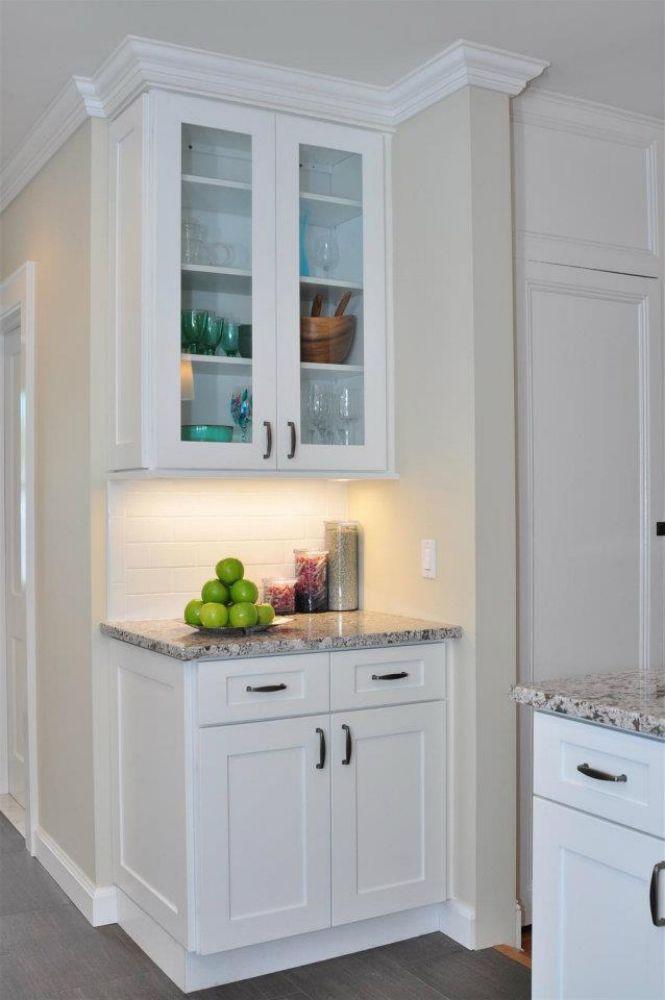Introduction to Forevermark Petit Brown Cabinets
Forevermark Petit Brown cabinets are known for their durability, rich tones, and ability to blend into both traditional and contemporary kitchens. Their warm, earthy finish makes them a versatile option for many home design styles. However, when a remodel is complete, homeowners often find themselves with leftover cabinet pieces—panels, doors, or trim that were not used during installation. Instead of storing them in the garage or discarding them, many homeowners are finding creative and functional ways to repurpose these extra pieces. This article explores innovative ideas for reusing leftover Forevermark Petit Brown materials, providing inspiration for DIY projects that extend their beauty and utility beyond the kitchen.
Why Repurpose Leftover Cabinet Pieces?
Repurposing leftover cabinet parts is both practical and sustainable. It prevents waste, saves money on purchasing new furniture or décor, and allows you to customize unique home pieces. Since Forevermark cabinets are built with high-quality materials, they’re sturdy enough to be repurposed into other projects that can last for years. Additionally, reusing leftover cabinet materials can tie together the design aesthetic across different rooms of your home, creating a cohesive and stylish look.
Creating Custom Shelving Units
One of the most straightforward ways to reuse leftover Forevermark Petit Brown pieces is to turn them into shelving. Cabinet doors or panels can easily be cut down to create wall-mounted shelves for kitchens, bathrooms, or living rooms. Adding matching brackets or invisible supports can elevate their appearance and functionality. Not only does this maximize unused wall space, but it also allows you to showcase décor items, cookbooks, or storage baskets in a way that matches your kitchen cabinetry.
Transforming Into Furniture Accents
Leftover cabinet doors and panels can be cleverly transformed into furniture accents. For instance, they can be used as tabletops for side tables or as decorative fronts for storage chests. By integrating the Petit Brown finish into furniture pieces, you can extend the cohesive style of your kitchen into adjoining rooms like dining areas or family spaces. Even a small nightstand or console table can benefit from these repurposed cabinet parts, giving your furniture a custom-built appearance.
Designing a Home Office Workspace
With more people working from home, leftover Forevermark Petit Brown pieces can be repurposed into functional home office furniture. Panels can become desktop surfaces, while drawers can be refitted into under-desk storage units. Using the same cabinet materials that exist in your kitchen ensures durability and gives the workspace a polished, professional look. This is particularly appealing if your home office is located near your kitchen or living area, as it maintains design consistency.
Building Decorative Wall Features
Another creative way to repurpose cabinet materials is by designing decorative wall features. Leftover panels can be arranged into a wooden accent wall, creating a rustic or farmhouse-inspired backdrop. Smaller pieces can also be framed and used as wall décor, offering texture and warmth to your interiors. The deep tones of Petit Brown add richness to any wall feature, making it an affordable way to create a statement design element in your home.
Repurposing Into Entryway Storage
Entryways benefit greatly from extra storage solutions, and leftover cabinet parts can be the perfect material for such projects. A tall panel can serve as the backboard of a coat rack, while cabinet doors can become cubby fronts for shoes or bags. Adding hooks, baskets, or a bench seat completes the setup, transforming extra cabinetry into a highly functional mudroom or entryway solution.
Crafting Kitchen Accessories
Small leftover pieces can be turned into everyday kitchen accessories. For example, thin panels can be made into cutting boards, serving trays, or spice racks. A cabinet door could be repurposed into a chalkboard menu board by painting its center with chalkboard paint. These DIY accessories not only serve a purpose but also complement the existing Petit Brown cabinetry, tying in the kitchen’s style through subtle details.
Using Leftovers for Bathroom Vanities
If you have enough leftover material, creating a small bathroom vanity is another fantastic use. Bathrooms often benefit from compact yet stylish storage, and cabinet panels or drawers from Petit Brown cabinets can be repurposed to create a cohesive vanity design. Pairing the rich brown finish with a neutral countertop can elevate a small bathroom, giving it the same level of sophistication as your kitchen.
Making Outdoor Furniture
While not all cabinet materials are designed for outdoor use, some leftover Petit Brown pieces can be repurposed into outdoor furniture when properly sealed and treated. Cabinet doors can be transformed into tabletops for a patio side table, while larger panels can be used to craft garden storage boxes. With protective finishes, these items can withstand moderate weather and add style to your outdoor spaces.
Organizing the Garage or Workshop
Garage storage often becomes an afterthought, but leftover cabinets can help create order. Petit Brown doors and panels can be used to construct tool organizers, pegboard backings, or small storage bins. Installing extra shelving in the garage using these materials provides a sturdy, attractive way to keep supplies organized. This ensures that the investment in Forevermark cabinets extends into practical, behind-the-scenes areas of the home.
Adding Style to Kids’ Rooms
Children’s rooms can also benefit from leftover cabinet pieces. For example, small cabinet doors can be converted into toy box lids, or panels can be used as bookcase backings. By sanding edges and adding a touch of playful color, these pieces can become child-friendly storage solutions that still carry the elegance of the Petit Brown finish in subtle ways.
Sustainability and Value in Repurposing
Ultimately, finding creative uses for leftover Forevermark Petit Brown pieces is about sustainability and maximizing value. Rather than discarding extra materials, homeowners can embrace DIY projects that enhance their living spaces. Repurposing creates opportunities to express creativity, customize home décor, and reduce environmental impact by reusing quality wood products that might otherwise go to waste.
Conclusion
Leftover Forevermark Petit Brown cabinet pieces open the door to countless creative possibilities. From custom shelving and furniture accents to bathroom vanities, garage organizers, and decorative wall features, these durable and stylish materials can be repurposed in ways that extend both their beauty and utility throughout the home. Repurposing not only prevents waste but also reinforces a cohesive design style while saving money on new furniture or décor. With a little imagination and basic DIY skills, homeowners can transform leftover cabinet pieces into practical and aesthetic additions that elevate their living spaces.
Read: Can Forevermark Petit Brown Be Used In DIY Kitchen Projects?
Read: What Tools Are Needed To Install Forevermark Petit Brown Cabinets?
Frequently Asked Questions
Q1: Can leftover Forevermark Petit Brown panels be cut to custom sizes for DIY projects?
A1: Yes, the panels can be cut to fit specific needs. Using proper woodworking tools ensures clean edges and a professional look for any repurposed project.
Q2: Are leftover cabinet materials durable enough for heavy-use furniture?
A2: Absolutely. Forevermark cabinets are made with quality materials, making them durable enough for creating furniture like desks, vanities, or shelving units.
Q3: Do I need special finishes if I repurpose cabinet pieces for outdoor use?
A3: Yes, you’ll need to apply weatherproof finishes or sealants to protect the wood from moisture and sun exposure, ensuring longevity.
Q4: Can leftover Petit Brown pieces be combined with other materials in projects?
A4: Definitely. They pair well with glass, metal, and lighter wood tones, allowing for stylish combinations in DIY furniture or décor projects.
Q5: How do I ensure safety when cutting or sanding leftover cabinet pieces?
A5: Always wear safety goggles, gloves, and a dust mask. Use proper woodworking tools and work in a well-ventilated area to ensure safety during the process.

